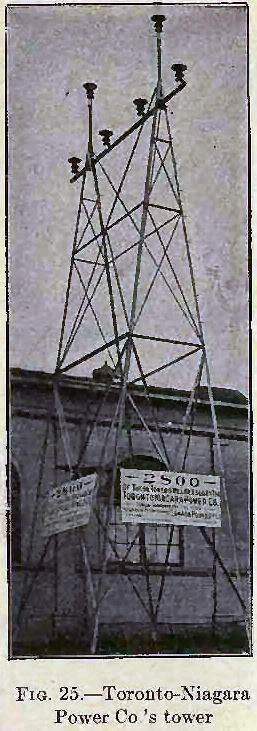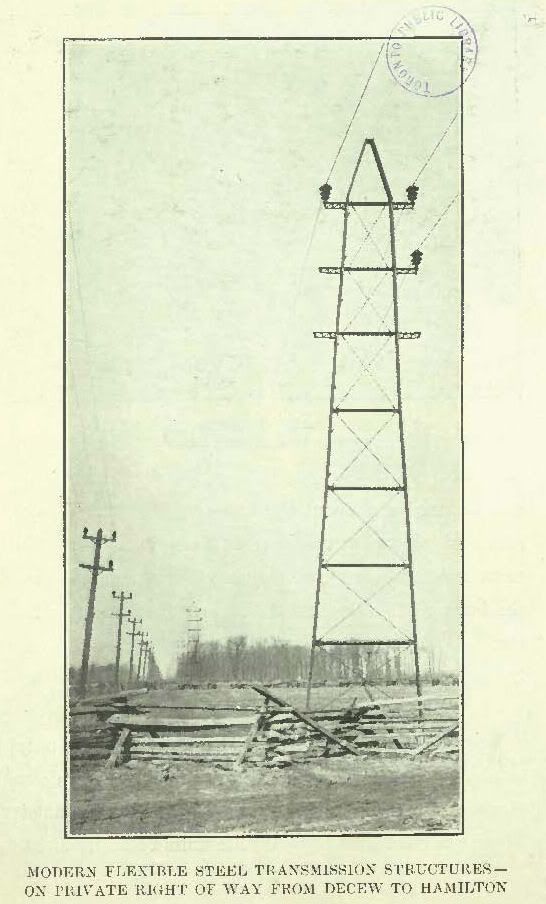Came across some photos of stuff you may c but never take note of. Feel free to add photos of similar items below. All pictures courtesy of archive.org and are in the public domain.
The developement of electrical power started about 1900 from the Niagara area to points in Ontario. Here are some early pics of the transmission lines/towers and some still do exist.
The pic below is the Niagara/Dundas/London corridor line. This view looks north towards the Dundas substation. The line on right is incoming from Niagara, the line on left outgoing to London. This line still exists today from Dundas to Ingersoll and also along Hwy 6 from Waterdown to Guelph.

The next pic is of the same line while workers erected the towers. Note the fact no safety gear......

Next is that same line from Niagara Falls at the Welland Canal. Note the workmen on the canal tower finishing it off while the line is only strung to the shorter tower on the left.

Next is the switching station from the first line to reach Hamilton, before Niagara power lines. This station served the line from Decew Falls to Hamilton and was situated north of CNR tracks at Strathearne Ave in Hamilton

This power line below ran from Niagara Falls ON via Chippewa, Fort Erie & Buffalo to Syracuse NY.

This line was part of the original Niagara to London Line. It still exists today running from London to Stratford.

This dual line ran from Niagara along the escarpment to a point near Stoney Creek at Ridge Rd. It then descended and travelled diagonally across the beach strip, where it headed northease across Burlington, meeting with the CNR tracks past Guelph Line. This line may still exist in the Hwy 20 Fonthill area.

Finally the original Decew Falls line to Hamilton. Part of this line still exists in the Pelham area. Ontario Hydro left one tower standing to mark the historical
site of the line to Hamilton. It stands at Greenhill Ave at the foot of Cochrane Rd.
